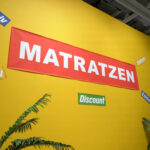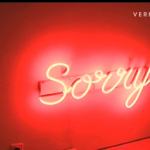As part of the “Survey” sector of Art Basel Miami Beach 2022, which features historical art projects, Meredith Rosen Gallery (New York) exhibited Belgian artist Guillaume Bijl’s work “Casino”. “Casino” is a working casino, first presented at S.M.A.K. in Ghent in 1984. The piece is one of Guillaume Bijl’s earliest “Transformation-installations” of a casino, including the employment of fictional croupiers at the opening. In this video we take a closer look at the work and talk to the artist about the “Casino” and his work in general.
Guillaume Bijl: Casino. Interview with Guillaume Bijl / Meredith Rosen Gallery / Art Basel Miami Beach 2022. Miami Beach, November 29, 2022.
> Right-click (Mac: ctrl-click) this link to download Quicktime video file.
Guillaume Bijl is known for his large-scale installations and visual realism. Since the late 70s, Bijl has created realistic decors using found objects. In doing this, he had a pioneering role in the resurgence of the ready-made. Bijl shows the audience various aspects of our western “civilisation” and consumer society. Using extreme stereotypes, he creates a sort of ‘archaeology of our time’ in a tragic-comedic, alienating way.
Bijl has three bodies of work: Situation-installations, where he creates fiction in reality, usually in public space. In 1995 for instance, he mounted stuffed birds on roofs and lanterns during Documenta 9 in Kassel. Compositions, mostly called Composition Trouvée, are fragments from reality, objects that seem to have been taken from antiquaries or gift shops. These often kitschy-looking works are smaller in scale and always thoughtfully put together. Sorry works that are compositions of objects or installations with an absurd element to them, making them fall out of reality, into the surreal. A beautiful example is the bird’s nest containing one red and two white billiard balls, a bizarre still life.
Press text:
Meredith Rosen Gallery is pleased to present a historic exhibition of Guillaume Bijl’s installation Casino at Art Basel Miami Beach. First exhibited in 1984 at Friends Society of S.M.A.K., Ghent, Bijl restages one of his earliest “Transformation-installations” of a casino, including the employment of fictional croupiers at the opening. This incisive installation garners new meaning with Bijl’s placement of the psychological drives of gambling directly within the locus of a contemporary art fair.
Since 1979, Guillaume Bijl has contended with the status of exhibition space. His “Transformation-installations” are built on a fictional premise wherein the art space is no longer of use to the public and rented out to a more functional business, i.e. a Car Dealership (Centrum Beeldende Kunst, Rotterdam, 1984); Supermarket (Schirn Kunsthalle, Frankfurt, 2002); Shooting Range (Appollohuis, Eindhoven, 1985); or a Futon Store (New Museum, New York, 1989). Bijl has also realized fictive commercial booths at art fairs in Europe such as a “Mirror Stand” (FIAC Paris, 1988, collection Centre Pompidou); “Lamp Stand” (Art Basel, 1984, collection SMAK) and “Gold-Buing Stand” (Art Cologne,1989, collection Centre Pompidou).
When the art venue is transformed into a Casino, a ricochet of effects can occur: the element of fiction is immediately present. Because this environment is situated in an art space, it is appreciated as a sculpture and the players as performers. Through this displacement, Bijl commodifies our behavior and creates a lens through which we observe ourselves within our culture. Bijl shows a sort of archaeology of our society in real time that reveals the practices, behavior, and values of our current moment. Addiction, anxiety, stimulation, and pleasure rise to the surface in Bijl’s “trompe l’oeil” situation through irony.
At the original opening of Casino in 1984, Bijl activated the installation as a “tableaux vivant”, or “living picture” by employing two fictional croupiers who provided entertainment on the blackjack and roulette tables. He asked some of his friends to join the game. Later in the game, undercover police officers staged a real intervention and interrogation, because they were convinced it was an illegal casino, even though money was not exchanged. Each detail is scrupulously considered by Bijl down to the thickness of the carpet, the brand of chairs, and exact dimness of lighting, blurring the line between fiction and reality.
This presentation of Casino provides a new context at this fair for Bijl’s work to shed light on the volatile nature of the market which drives the art world. Originally shown in Belgium, Art Basel Miami Beach breathes a nuanced and exciting lens for Bijl’s significant contribution to installation art. With new forms of art selling, such as NFTs, and record breaking sales in the midst of a global pandemic, the art market is more visible on a global scale than ever before. Since its first exhibition in 1984, Casino has revealed our desperate attempts at fame and fortune, with humor and incisive critique.
Guillaume Bijl (b. 1946 Antwerp, Belgium) has been a pioneer of the revival of readmade art since the late 1970s. His work has been included in numerous solo and group exhibitions internationally, including the Paris Biennial (1982), Kunsthalle Bern (1986), Belgian Pavilion – Venice Bienniale (1988), New Museum, New York (1989), Documenta 9, Kassel (1992), Skulptur Projekte, Münster (2007), 11th Lyon Biennial (2011), Istanbul Biennial (2013) and Manifesta 11, Zürich (2016). Recently he has taken part in the following projects: Beaufort (2018), the Adriaen Brouwer year, Oudenaarde (2018), Play, Kortrijk (2018), Power to the People, Schirn Kunsthalle, Frankfurt (2018), the Bruegel year, Dilbeek (2019), Centre Pompidou, Shanghai (2021), Meredith Rosen Gallery (2021), Halle Verière, Meisenthal (2022), Nagel-Draxler Gallery (2023). Guillaume Bijl is represented by Meredith Rosen Gallery in New York.





